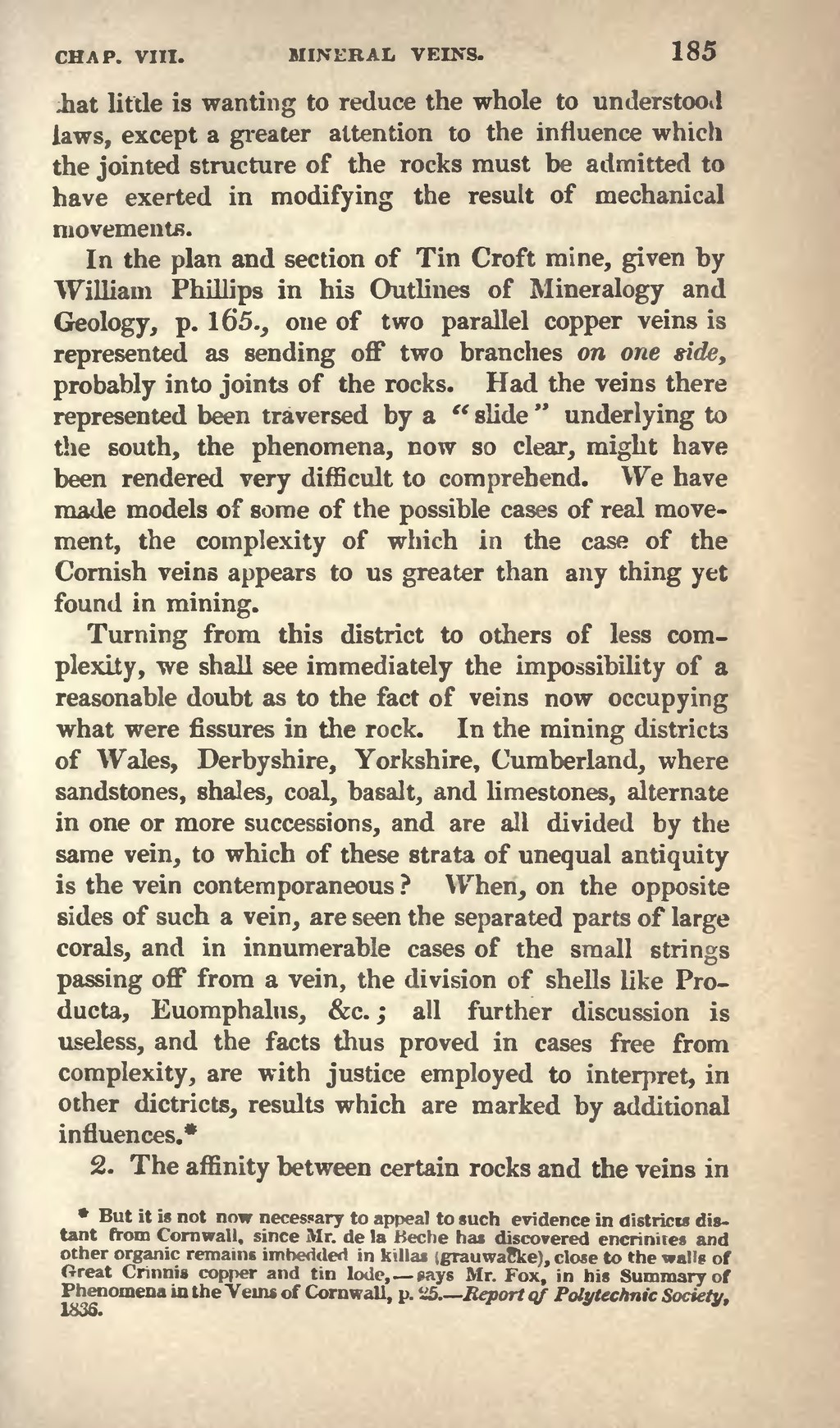that little is wanting to reduce the whole to understood laws, except a greater attention to the influence which the jointed structure of the rocks must be admitted to have exerted in modifying the result of mechanical movements.
In the plan and section of Tin Croft mine, given by William Phillips in his Outlines of Mineralogy and Geology, p. 165., one of two parallel copper veins is represented as sending off two branches on one side, probably into joints of the rocks. Had the veins there represented been traversed by a "slide" underlying to the south, the phenomena, now so clear, might have been rendered very difficult to comprehend. We have made models of some of the possible cases of real movement, the complexity of which in the case of the Cornish veins appears to us greater than any thing yet found in mining.
Turning from this district to others of less complexity, we shall see immediately the impossibility of a reasonable doubt as to the fact of veins now occupying what were fissures in the rock. In the mining districts of Wales, Derbyshire, Yorkshire, Cumberland, where sandstones, shales, coal, basalt, and limestones, alternate in one or more successions, and are all divided by the same vein, to which of these strata of unequal antiquity is the vein contemporaneous? When, on the opposite sides of such a vein, are seen the separated parts of large corals, and in innumerable cases of the small strings passing off from a vein, the division of shells like Producta, Euomphalus, &c.; all further discussion is useless, and the facts thus proved in cases free from complexity, are with justice employed to interpret, in other districts, results which are marked by additional influences.[1]
2. The affinity between certain rocks and the veins in
- ↑ But it is not now necessary to appeal to such evidence in districts distant from Cornwall, since Mr. de la Beche has discovered encrinites and other organic remains imbedded in killas (grauwacke), close to the walls of Great Crinnis copper and tin lode, says,—Mr. Fox, in his Summary of phenomena in the Veins of Cornwall, p. 25.—Report of Polytechnic Society, 1836.
